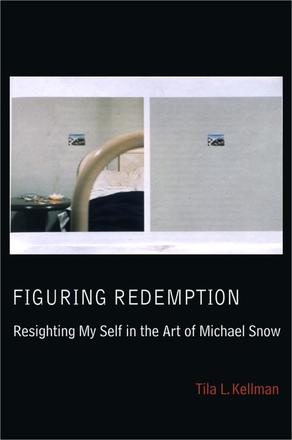
Figuring Redemption
Resighting My Self in the Art of Michael Snow
Description
Can visual art help redeem one’s sense of self, damaged by technological society?
Michael Snow’s work is often described as self-referential, meaning that it “talks” about the relationships between its materials and images, largely ignoring relationships beyond the “frame.” However, since the work also encompasses the way in which the interior relationship of the work intersects with sight and how they, together, create the frame, the work also must include the people looking at it.
This book explores how the visual art practice of Michael Snow asks the question Who? of the viewers as they interpret what lies before them. Much criticism of Snow objectively analyzes the material interrelationships in his work, ignoring viewer participation, and implicitly giving the artist control of the view. However, what if the “who” is addressed from the perspective of the viewer, who is looking across a gap created by concrete representation, time, place, experience and, perhaps, gender? How then can it remain objective?
Following on writers such as Martin Heidegger, Walter Benjamin, Paul Ricoeur, Jacques Derrida and Mikkel Borch-Jacobsen, Figuring Redemption questions the proposal that the contemporary sense of self is “fallen” as a result of modern technology, but can be redeemed in some part by certain kinds of visual art.
Original in its positioning of interpretive and critical writing on the side of an embodied viewer, this book rejuvenates Snow criticism by going beyond discussions of materials and operation or of loss and distancing due to mediation. By alternating personal performance writing with objective analysis, the text participates in the destabilizing process of questioning self-recognition that Snow’s practice initiates.
Reviews
Michael Snow is the philosopher-artist for our age of technological and digital media. Appropriately, Tila Kellman frames his work within the philosophical debates on the human condition in the post-industrial age. She draws bold connections between the concerns of Heidegger and Benjamin, of Ricoeur and Derrida, and Michael Snow's interrogations of media and language. The result is a radically new interpretation of the scope of Snow's work. Kellman pays due attention to his context within the conceptual and minimalist art currents of New York, but moves the analysis well beyond still current critical positions based upon his early reviewers. Her boldest move is to factor into the outcome the reader of Snow's work -- not only herself as reader but, potentially, every reader of the book. The result is a landmark in the critical interpretation of Canadian art.
- Gerta Moray, Associate Professor of Art History, University of Guelph